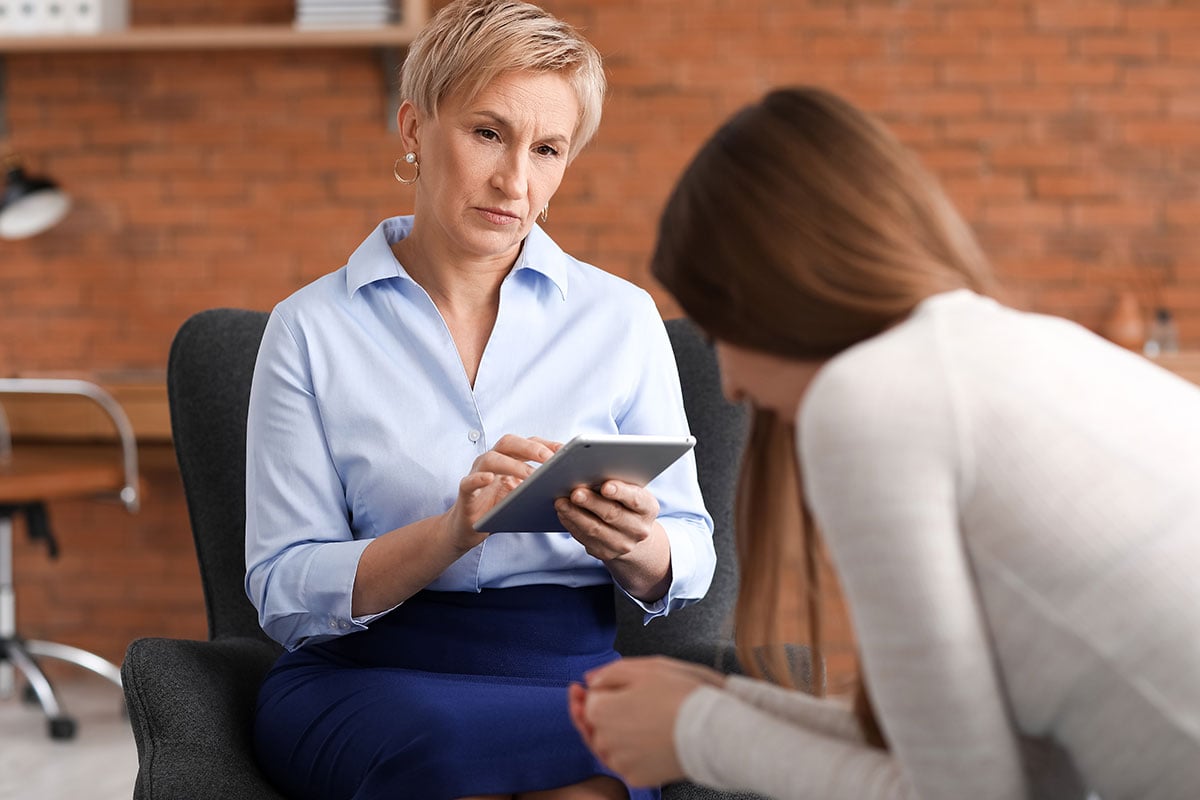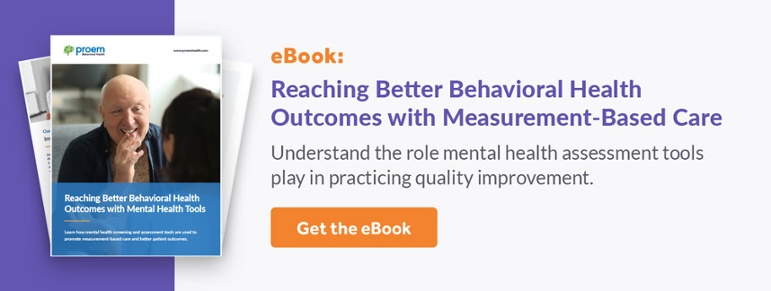Well before the pandemic, concerns about mental health were on the rise in multiple settings, from workplaces to school systems. With COVID-19 bringing unprecedented disruptions to work and home lives, screening for and treating disorders and illness affecting mental health is more important than ever.

Many people are discovering for the first time that their mental health has suffered while others who struggled with mental health in the past have found their struggles increasing. And all too often, the public carries many misconceptions about mental illness, which is why it is important for clinicians to be aware of and share key facts when identifying opportunities to educate those they are working to support.
Interested in how to select the right tools for an accurate diagnosis? Uncover the obstacles to early intervention and proactive care with our eBook Reaching Better Behavioral Health Outcomes.
Mental Health Facts: Mental Health Can Be Dynamic
Much of the public thinks of mental health and illness as discrete, static states. But when you explore "what is mental health," this isn’t at all the case. According to the Centers for Disease Control and Prevention (CDC), “Mental health includes our emotional, psychological and social wellbeing. It determines how we handle stress, relate to others and make healthy choices.” Like other states of health, it can change over time and be influenced by many other factors, such as presence or absence of medication or medical support.
Patients often learn of a mental illness diagnosis and mistakenly believe that it inherently will be untreatable and permanently life-altering. Yet many people with mental illnesses and disorders lead productive lives when supported by treatment — even more so when treatment planning is informed by outcome measures and measurement-based care. It can be a source of significant comfort to patients to learn that mental illness will affect more than 50% of the U.S. population at some point in their lifetime. Only 1 in 20 will experience significant illness, and they too can receive treatment and support that leads to significant improvements in their wellness.
Mental Health Facts: Prevalence Assumptions Are Often Wrong
Many in the public underestimate certain mental health concerns while overestimating prevalence of others. Data shows anxiety and depression are the most common mental health concerns, accounting for almost one-third of conditions in recent years. Annual prevalence among U.S. adults by condition was as follows pre-pandemic:
- Anxiety disorders: 19.1% (estimated 48 million people)
- Major depressive episode: 8.4% (estimated 21 million people)
- Posttraumatic stress disorder: 3.6% (estimated 9 million people)
- Bipolar disorder: 2.8% (estimated 7 million people)
- Borderline personality disorder: 1.4% (estimated 3.5 million people)
- Obsessive compulsive disorder: 1.2% (estimated 3 million people)
- Schizophrenia: < 1% (estimated 1.5 million people)
It should be noted this distribution has changed since the pandemic. Kaiser Family Foundation has reported more than 30% of U.S. adults were reporting symptoms of anxiety or depression in December 2021 — nearly triple pre-pandemic levels.
Mental Health Facts: Mental Health Screening of Youth Is Important
The public often mistakenly sees mental illness as an adult or predominately adult concern. Yet there are many mental health facts for youth that counter this misconception. For instance, according to MentalHealth.gov, “Half of all mental health disorders show first signs before a person turns 14 years old, and three quarters of mental health disorders begin before age 24.” Common mental health conditions in youth include attention deficit hyperactivity disorder (ADHD), autism, bipolar disorder, conduct disorder, depression, grief, suicide and substance abuse.
The problem with failing to recognize prevalence among youth is that many individuals will not receive treatment or not receive in a timely manner. Federal stats show less than 20% of children and adolescents with diagnosable mental health problems receive the treatment they need.
Mental health concerns in youth has grown as an area of particular concern during the pandemic, with the U.S. Surgeon General issuing an advisory on the youth mental health crisis in the pandemic era. Adolescent girls may be at particular risk. As the CDC reports, they have represented the largest increases in emergency room visits for mental health conditions in recent years.
Mental Health Facts: Mental and Physical Health Are Linked
Many in the public also hold mistaken ideas about whether mental and physical health are distinct. Yet by examining mental health and physical health statistics, you’ll see the two are often linked, and that the link works both ways. As the CDC reports, based on NIH data, depression and other mental health conditions can increase the risk of diabetes, heart disease and stroke. People with depression have a 40% higher risk of developing cardiovascular and metabolic diseases than the general population. Conversely, suffering from various chronic conditions can increase the risk for mental illness. On a positive note, there is increased recognition about the parity between physical and mental healthcare.
Of note: Not only has the pandemic exacerbated mental health concerns across multiple demographics, but there also is evidence to suggest that COVID patients have an increased risk of developing mental health problems, according to a BMJ study reported by The New York Times.
What These Facts Mean for the Future of Mental Healthcare
Greater screening is needed to support earliest treatment for those with mental health conditions and provide best possible care. Amidst an environment with many misconceptions about mental illness, access to this screening and care has been a notable challenge. The average delay between onset of mental illness symptoms and treatment is a staggering 11 years.
One way clinicians are improving access to screening is by making use of cloud-based assessments. Proem digital screening tools make use of a brief 3-minute set of questions designed to identify if patients may suffer from the most common pediatric and adult DSM-5 behavioral health disorders. If individuals show signs of potential behavioral health issues, providers can leverage additional Proem tools to build upon the assessment and further identify and help diagnose the condition(s).
To learn how to incorporate Proem screeners into your intake processes and better identify at-risk individuals who may need additional evaluation, visit proemhealth.com.





.png)









